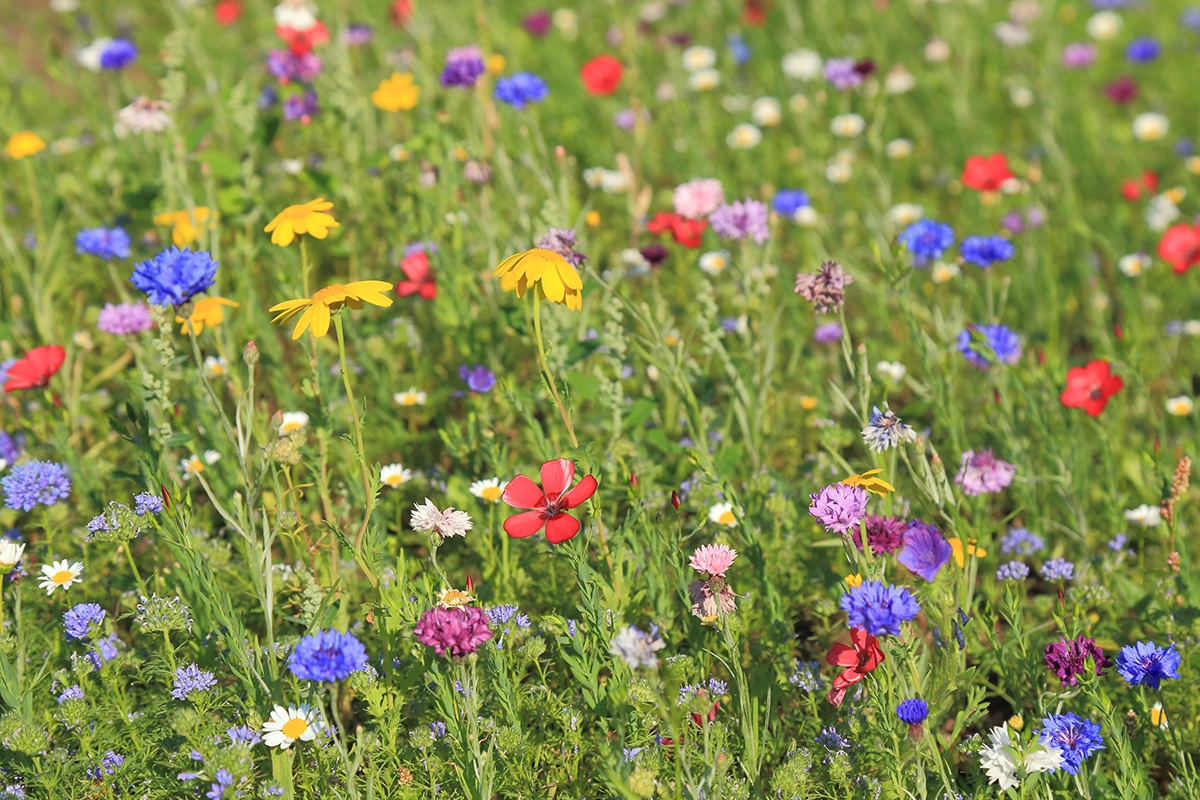An easy solution to promote biodiversity
Our hydroseeding system can seed large areas of wildflowers quickly.
Wildflower seeding is a great way to re-establish habitats that have now disappeared.
It provides:
- Biodiversity: Wildflower mixes support a diverse range of bees, birds, and other wildlife. By planting wildflowers, you can create habitats for these creatures, which in turn help to support healthy ecosystems.
- Low-maintenance: Wildflowers are generally low-maintenance and require less water, fertiliser, and pesticides than traditional lawns and gardens. Once established, they can often thrive on their own without much intervention.
- Aesthetics: Wildflowers can add natural beauty and colour to any landscape. They come in a variety of colours and shapes and can be used in a range of settings, from large fields to small gardens.
- Erosion control: Hydroseeding is a great way to promote quick germination of wildflower seed mixtures. This quick bonding and germination firms the soil, which helps prevent erosion.
- Soil health: Wildflowers can help to improve soil health by adding organic matter and promoting healthy soil microbes. This, in turn, can help to support the growth of other plants.
- A cost effective solution: Wildflower seeds are often less expensive than traditional landscaping options, making them a cost-effective choice for large-scale planting projects.
Sowing wildflower meadows
Sowing wildflower meadows involves carefully selecting a suitable site, preparing the soil, and choosing the right mix of wildflower seeds. The success of establishing a flourishing meadow relies on factors such as sunlight exposure, soil quality, and moisture levels.
Wildflowers grow best in healthy low-nitrogen fertility and de-compacted soil that has been freshly prepared to a suitable tilth.
The environmental impact of hydroseeding wildflowers
The three types of wildflowers—annuals, biennials, and perennials—each play a unique role in the environment, particularly in relation to bees and pollination.
Annual wildflowers, known for their quick growth and blooming within a single growing season, provide a burst of vibrant colours and nectar sources that attract bees and other pollinators.
Biennial wildflowers, on the other hand, have a two-year life cycle. In the first year, they focus on vegetative growth, developing strong root systems, while in the second year, they burst into stunning floral displays. They offer long-lasting nectar and pollen resources for bees and other pollinators.
Perennial wildflowers are the steadfast pillars of the natural landscape. With their ability to return year after year, they provide a consistent source of nourishment for bees.
The presence of all three wildflower types creates a dynamic and balanced environment, enhancing biodiversity and fostering a healthier ecosystem as a whole.
When is the best time to hydroseed wildflowers?
Seeding wildflowers is most successful from March to May and September to October, taking into account the quality of the soil. Seeding can also be carried out in the main summer months but should be lightly irrigated.
Poor soil conditions can also affect the timing of seed sowing.
For example, for heavy soils that are prone to water logging during the winter months, it is advisable to sow the seeds in the spring. This is so that the poor soil conditions do not hinder the germination and growth of the wildflower seeds.
In the case of light soils, seeding in late summer or autumn can result in quick germination, although some seeds may not emerge until the following spring.
Please contact us for more information and more detailed advice on which wildflower seed mixes can work best for you.

